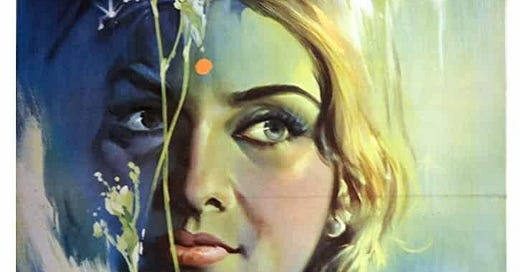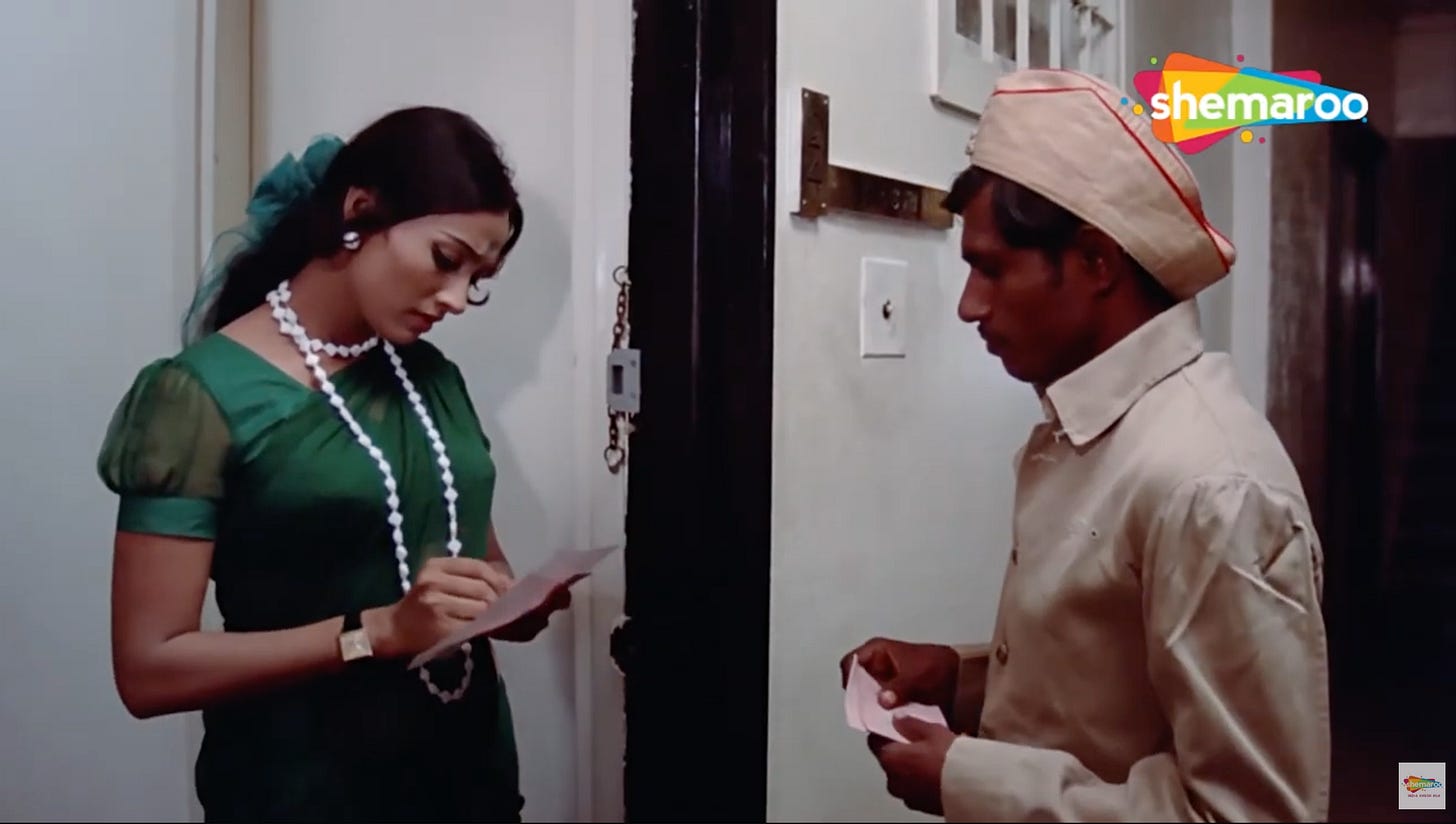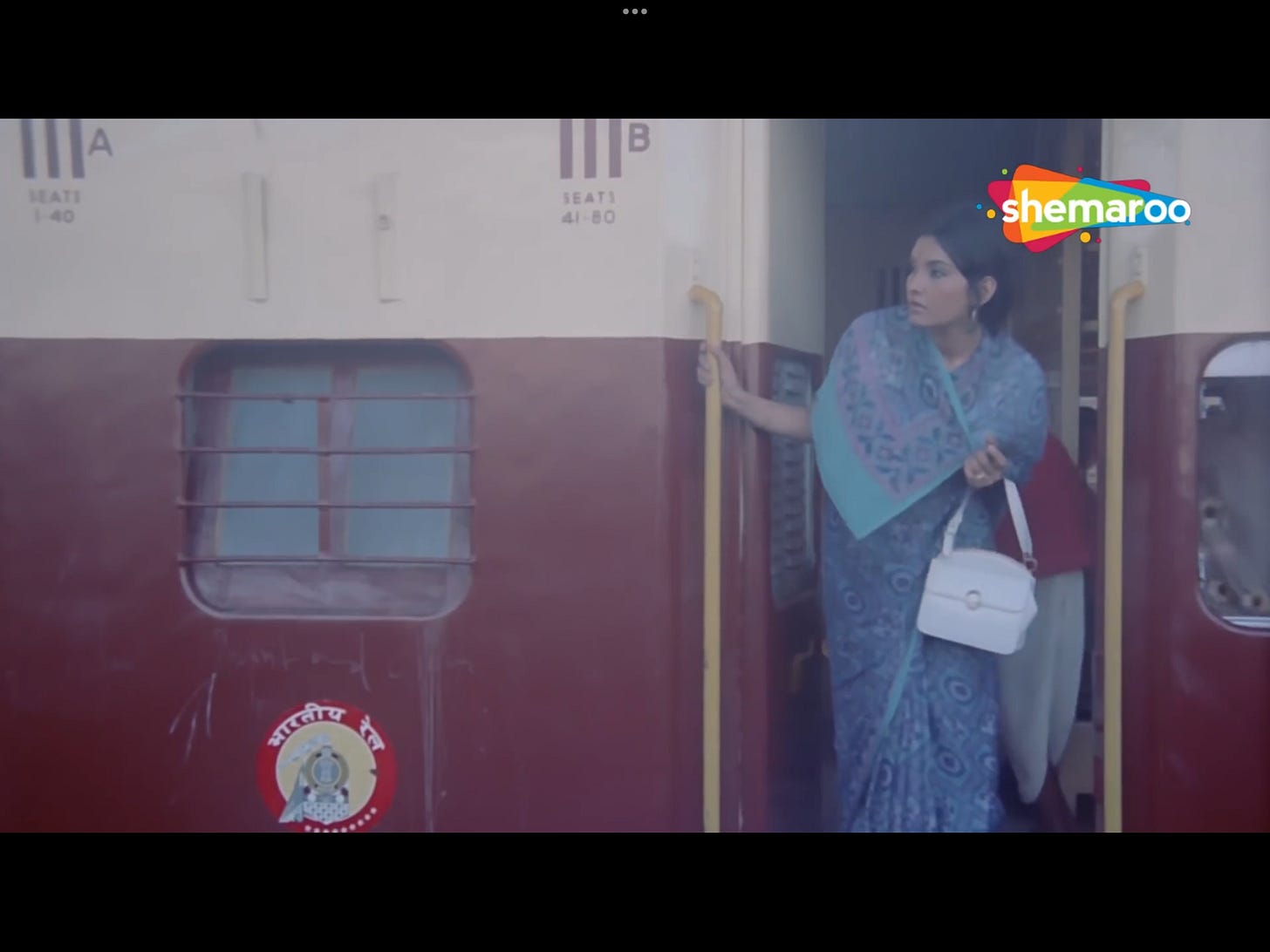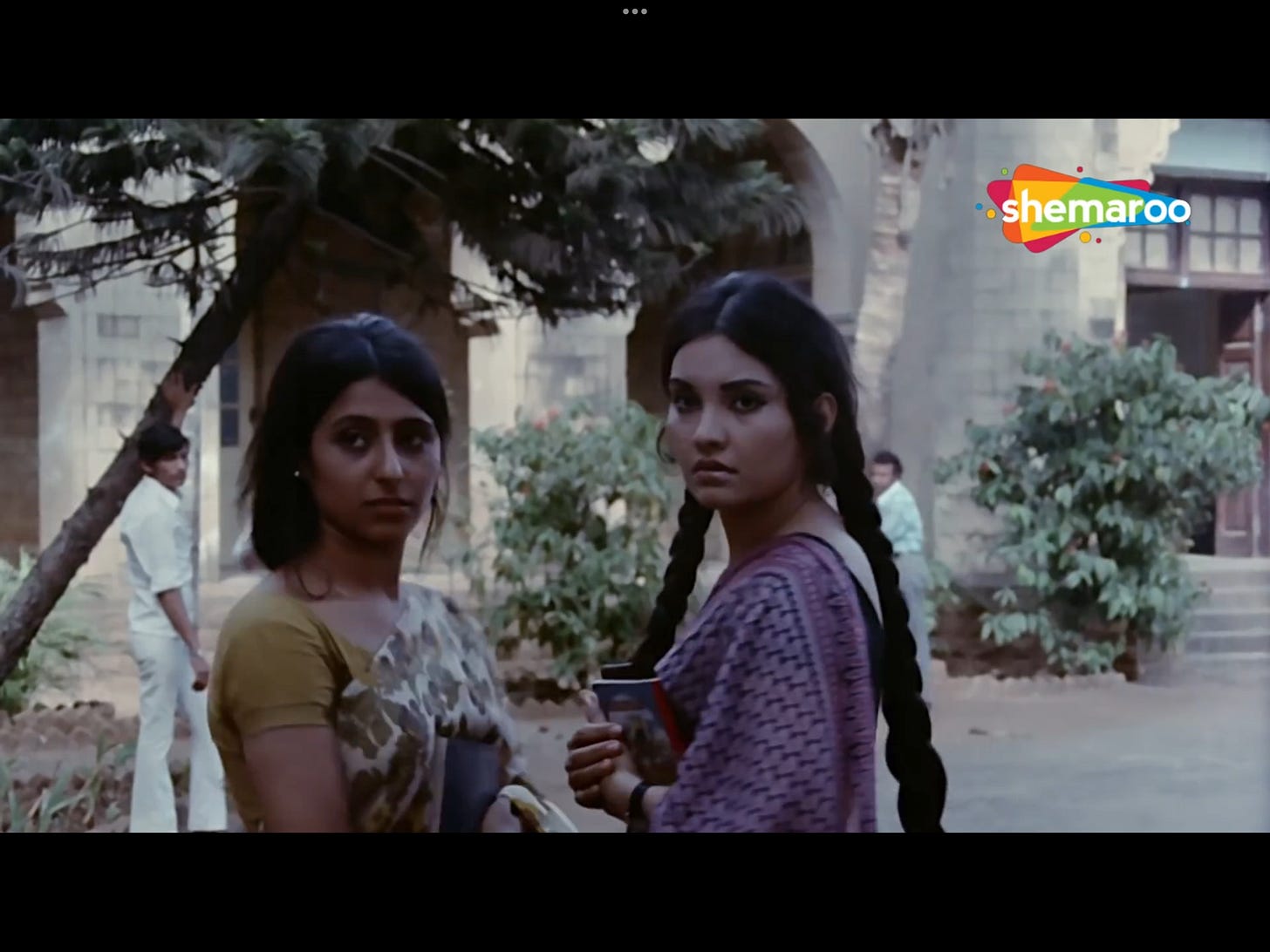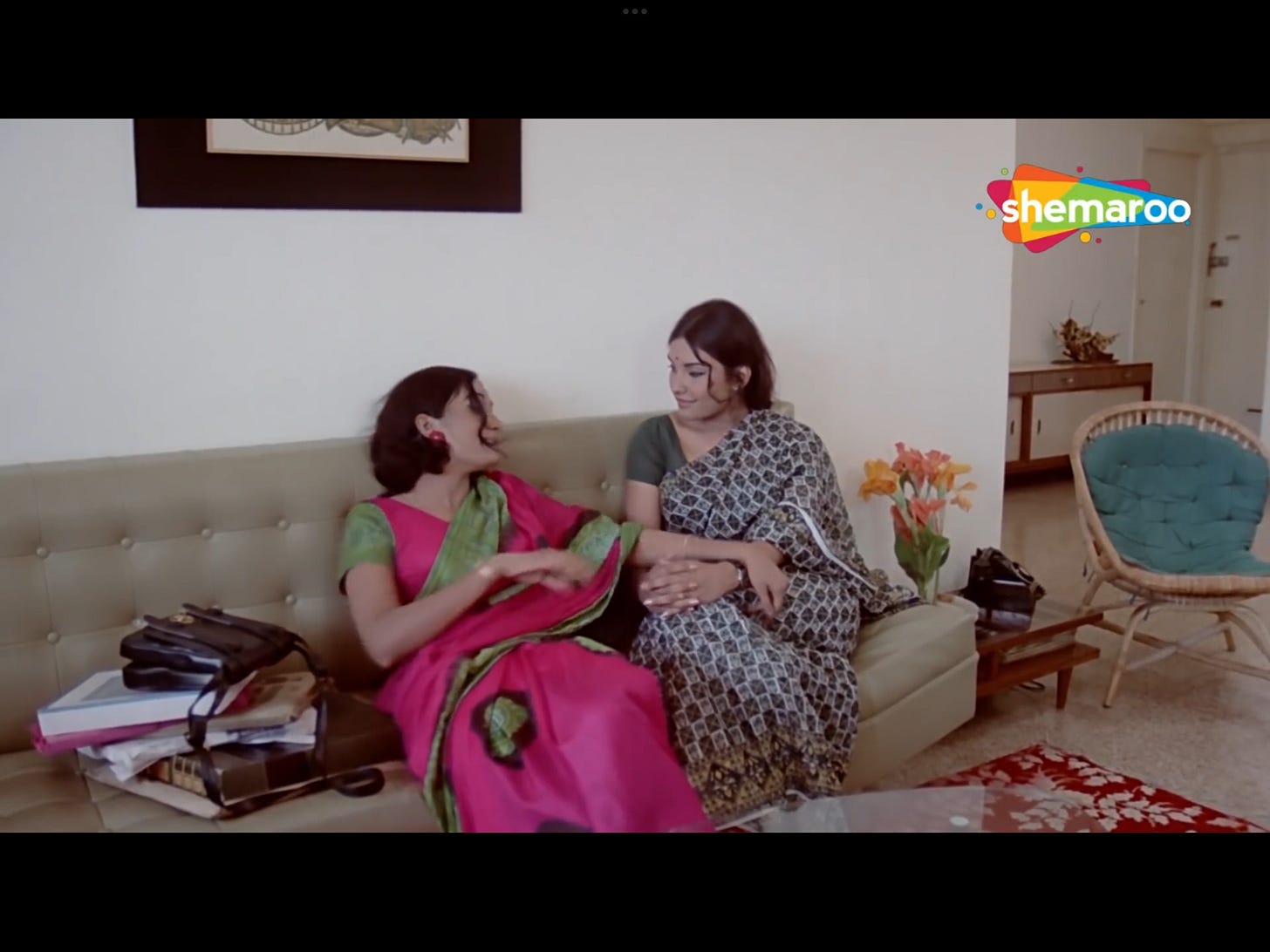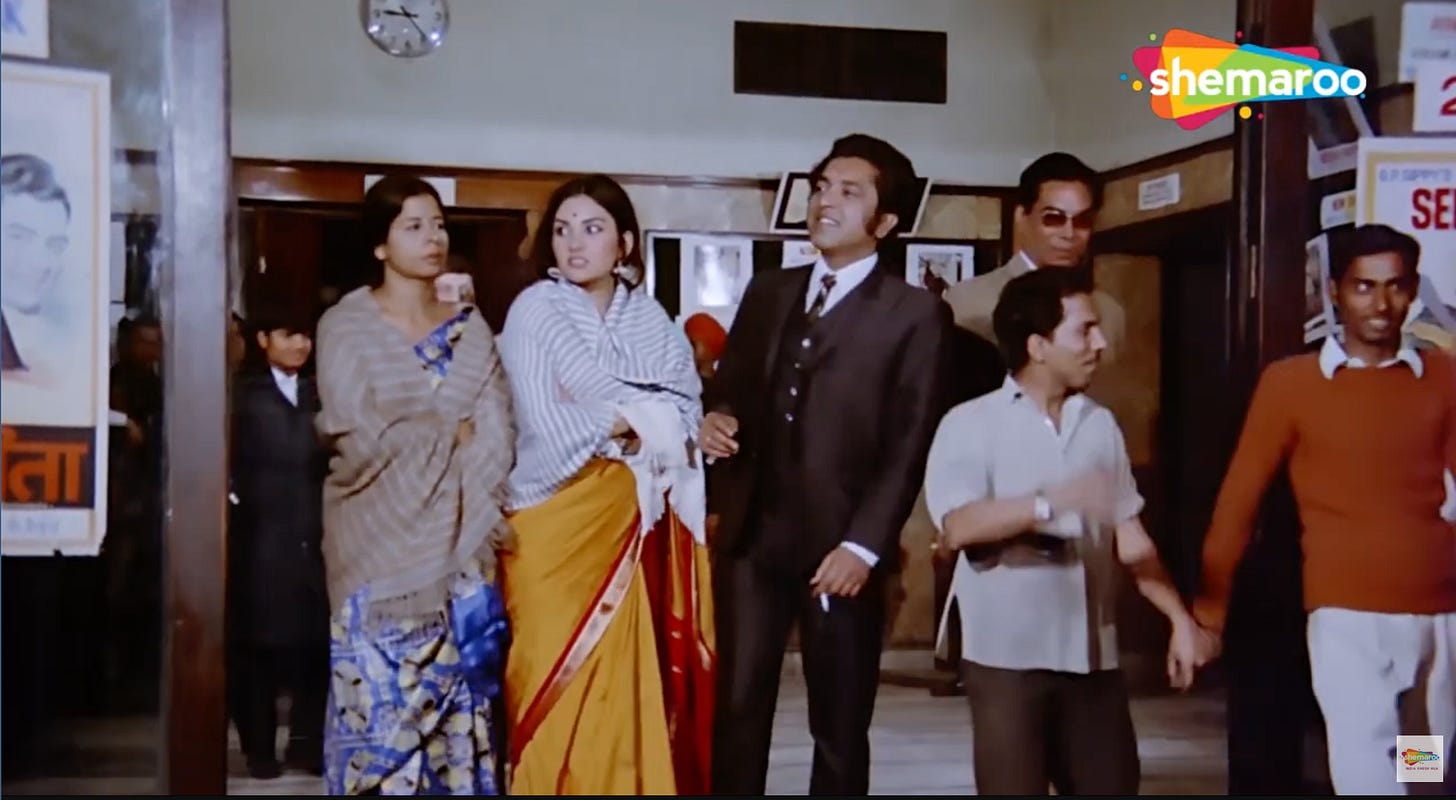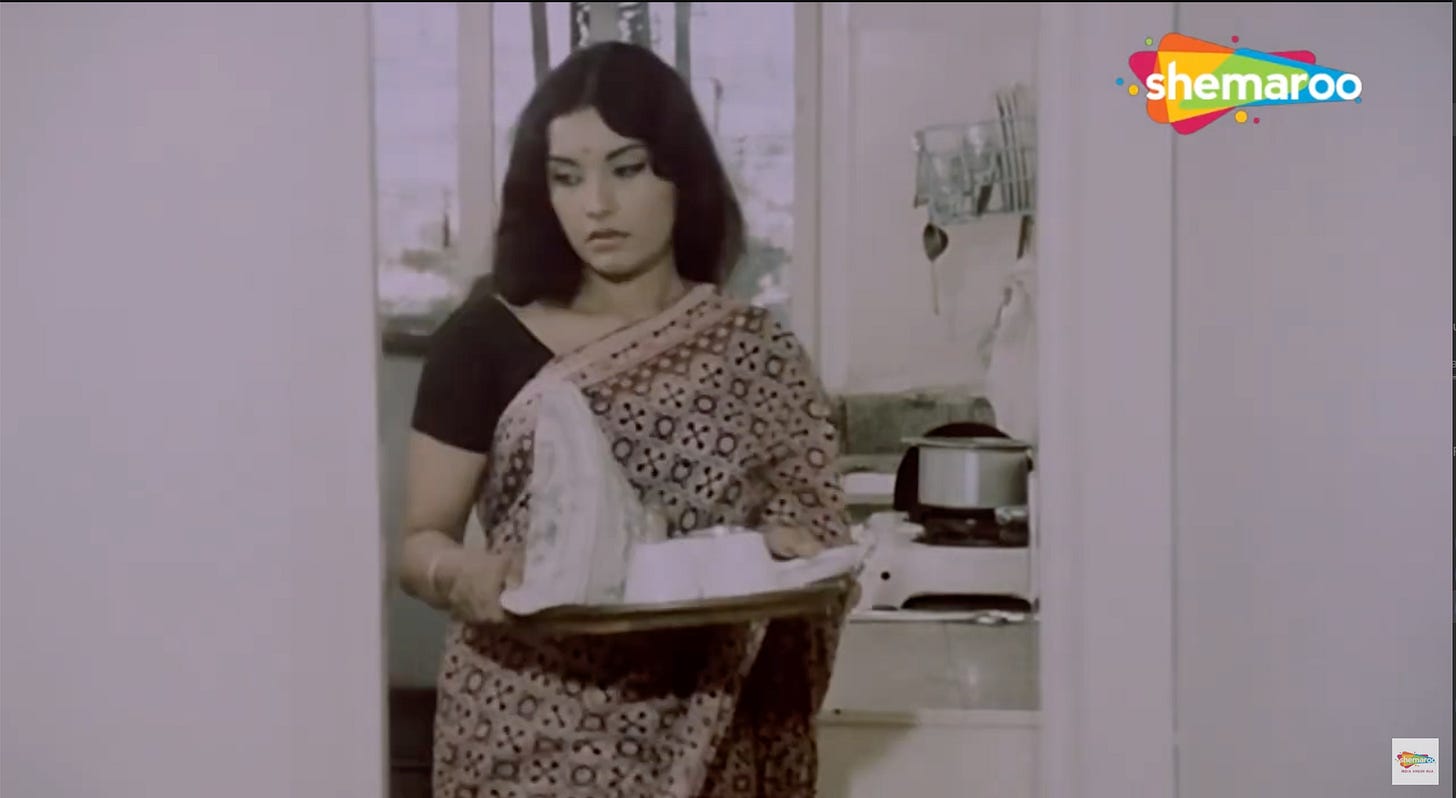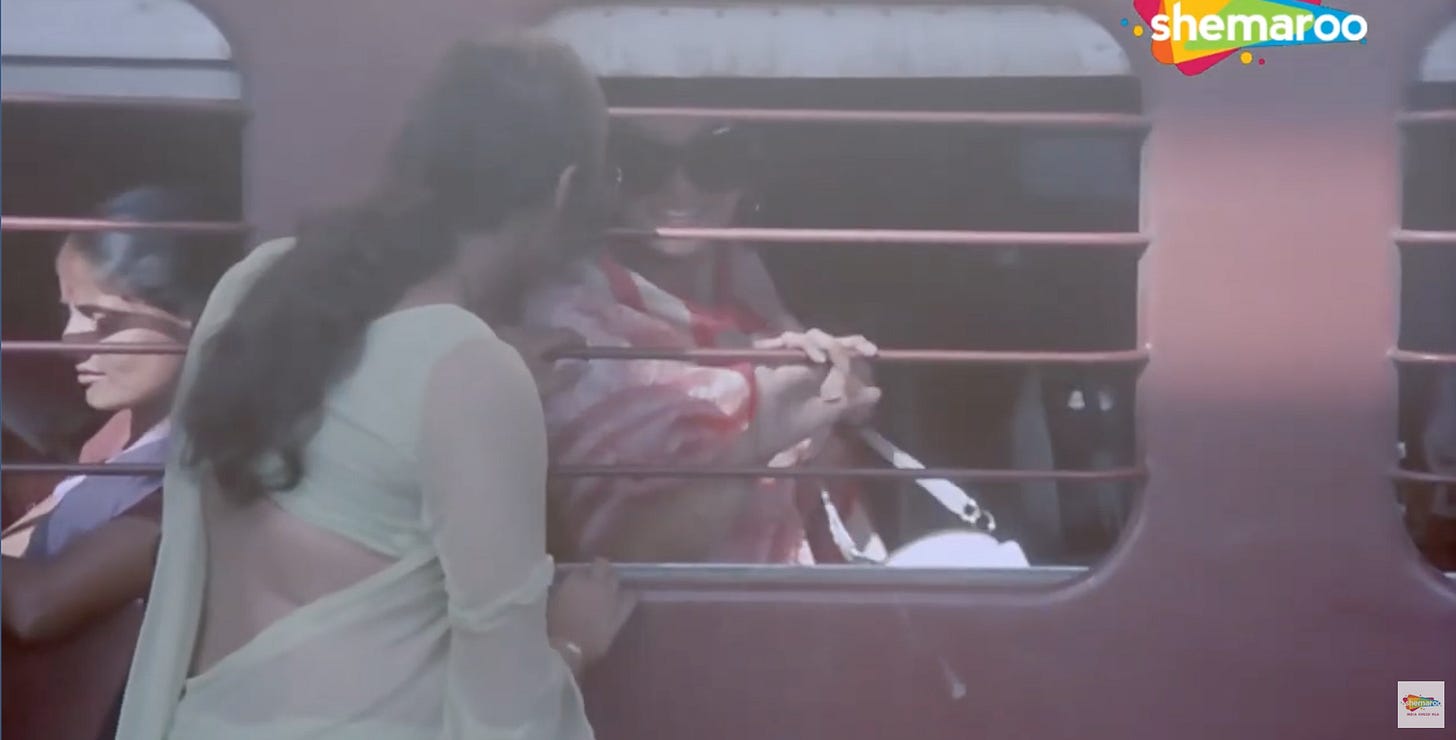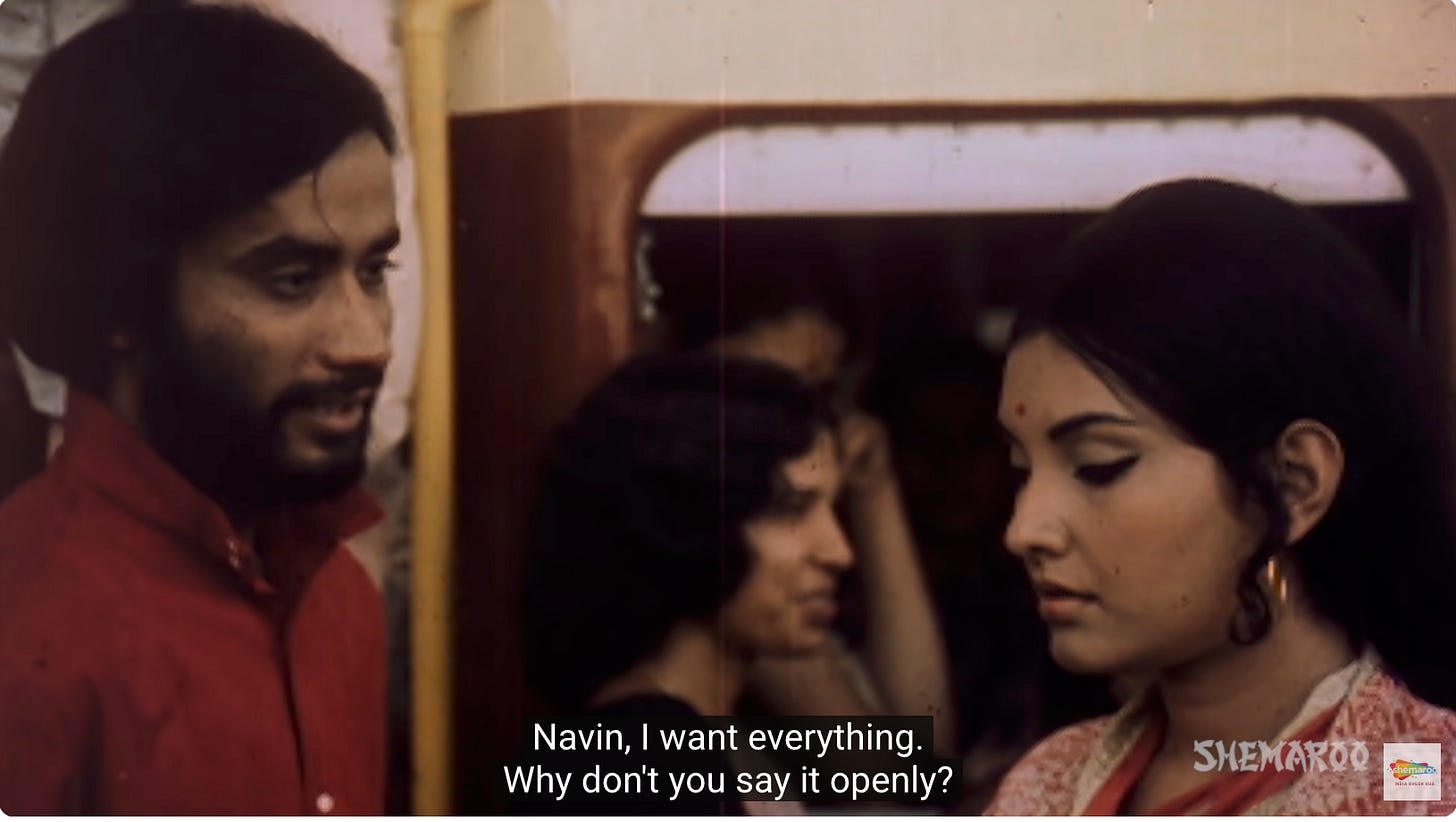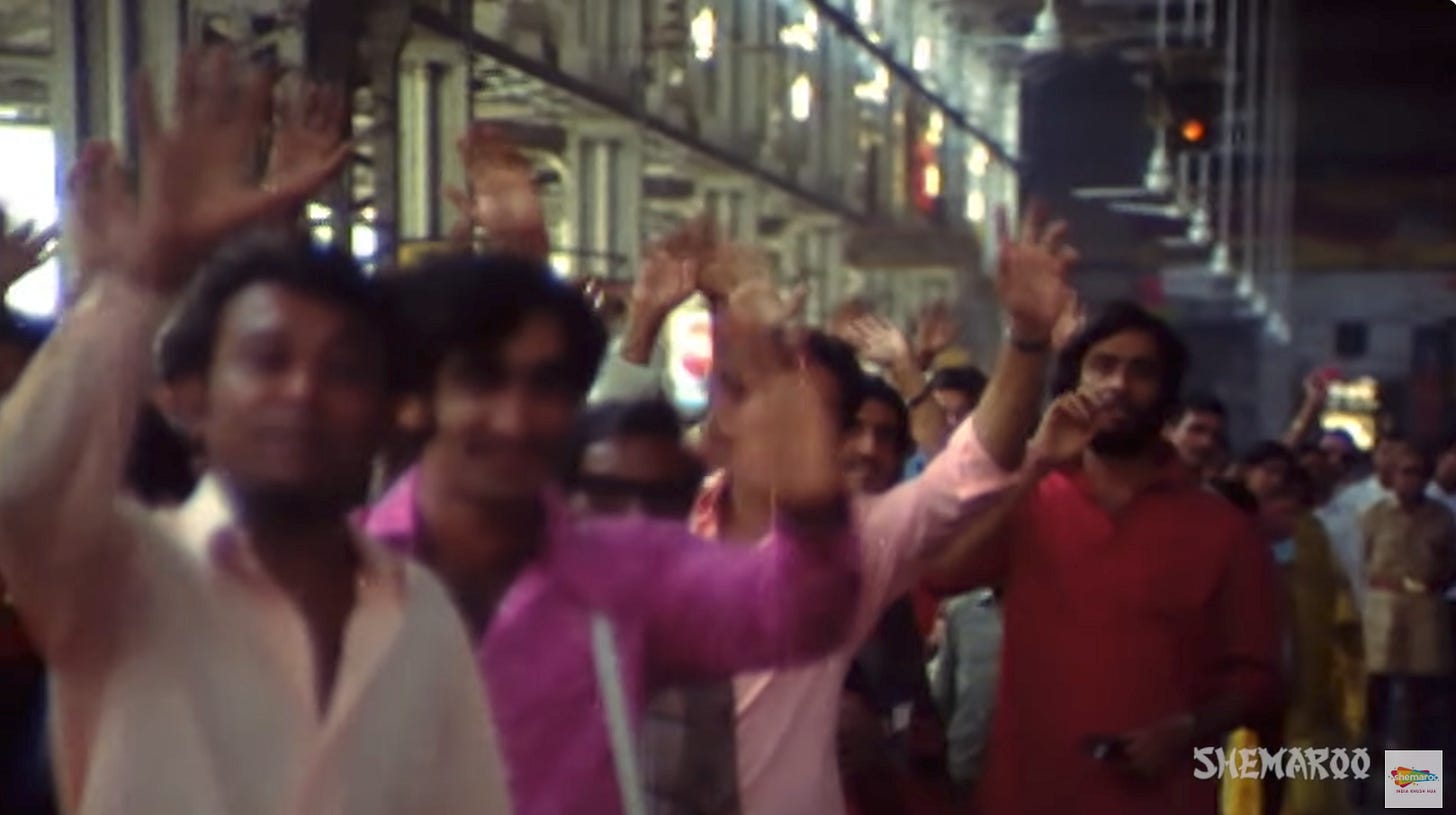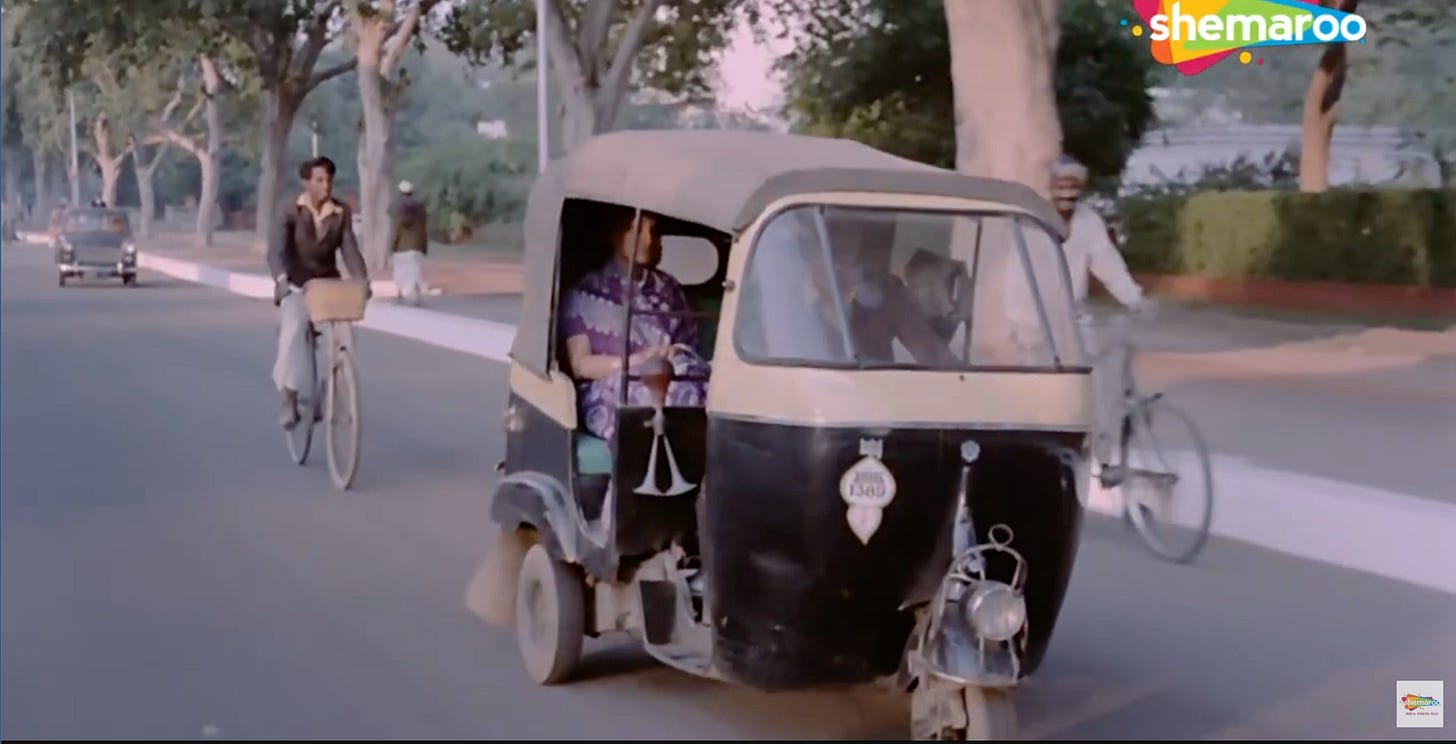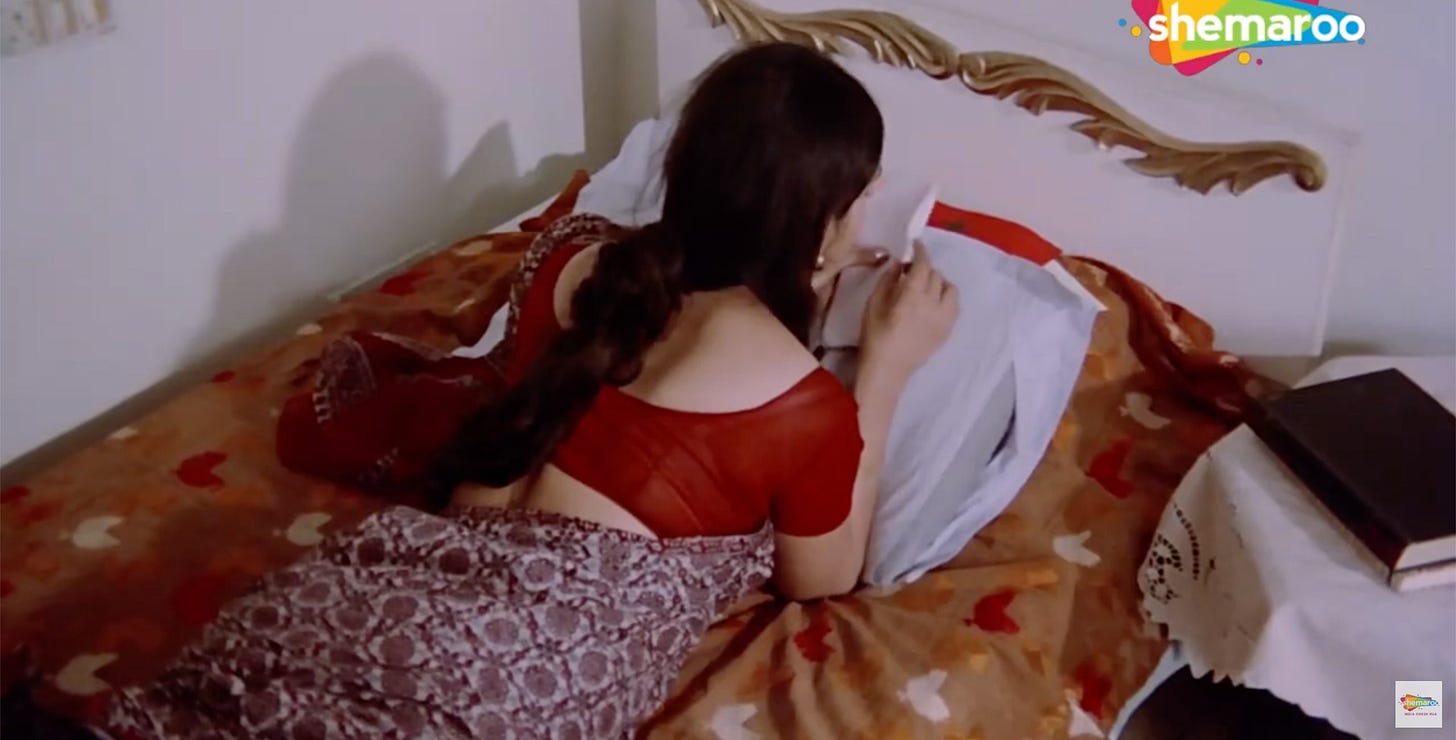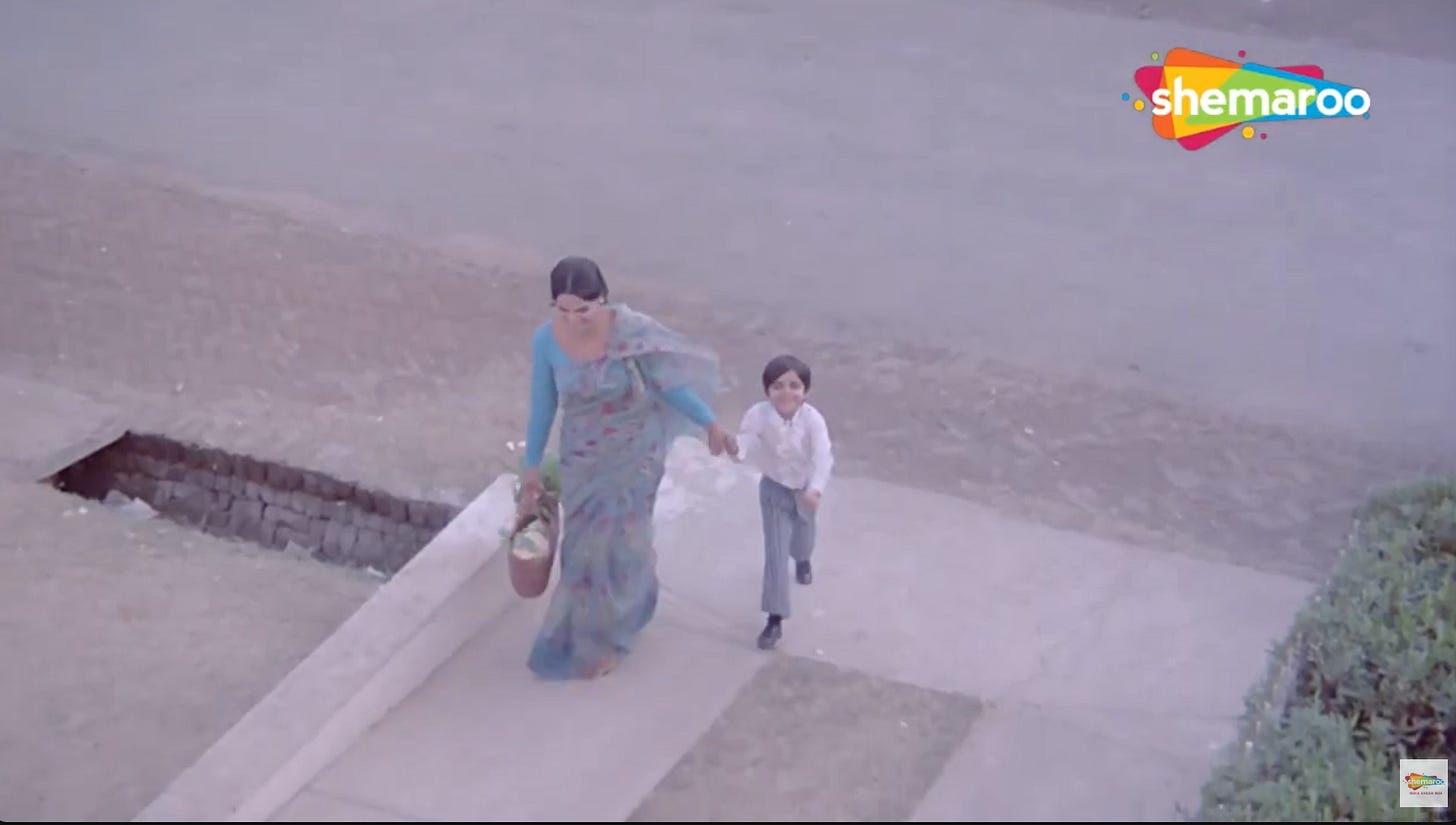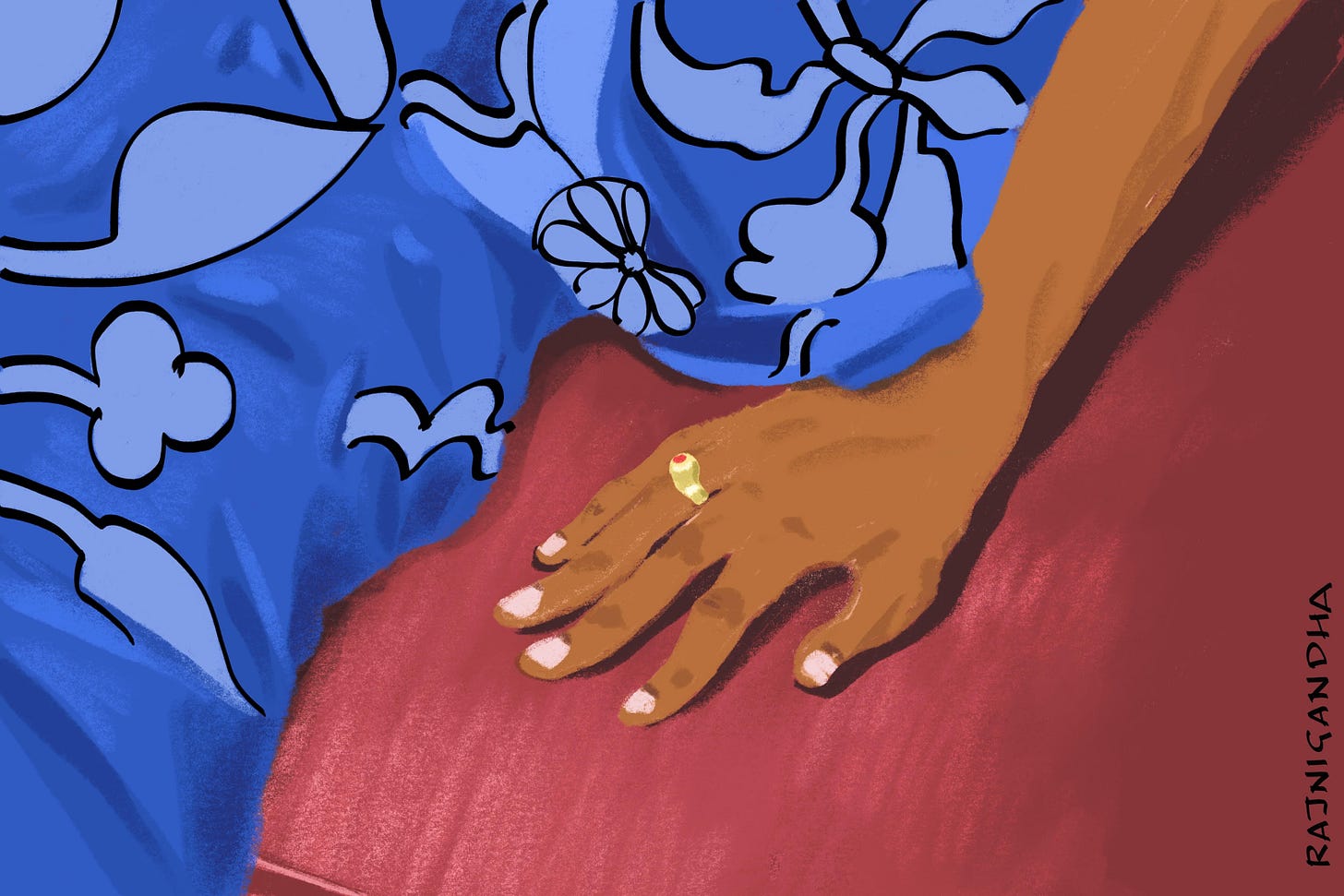Dir: Basu Chatterjee/ Writer:Mannu Bhandari/ Prod: Suresh Jindal
70s and 80s were the golden period for alternate cinema- championed by Basu Chatterjee, Hrishikesh Mukherjee, Sai Paranjape, Gulzar and many others- people who made films that managed to strike a fine balance between social realism and pure fantasy that was packaged by mainstream cinema. They offered a realistic perspective into the daily drama of the urban middle class life - exploring the territory between ordinary and dramatic - a concept that was considered the kiss of death by mainstream filmmakers.
Infact, even Rajnigandha was too outré for its time, as one of the distributors said, film se ‘class ki boo aati hai’ - the film reeks of working class! When it finally saw the light of day, after almost 2 years of lying in the cans, the audience loved it.
Was it because they saw themselves reflected in the film while still existing within the familiar escapist terrain.
While commercial mainstream cinema was forever trying to ‘style’ or reinvent the saree - recall Mumtaz’s orange sari in Bhramachari (1968) or the bouffant hairdos and dramatic eyeliners styled with tight sari drapes (Sadhana and Sharmila Tagore)- non mainstream cinema, in tune with its themes, chose the everyday aesthetic of the daily commuter.
All of us - of 70s vintage - remember the easy drapes, bold prints, paisley motifs, sheer fabrics in our mothers’ wardrobes. Rajnigandha’s careful selection of saris, with their crisp, young feel, is a nostalgic nod to our mothers’ youth and our own childhood.
It is the story of a working girl’s middle class aspirations and a true to life romantic dilemma.
Basu Chatterjee preferred authentic costumes and real locations (although Vidya Sinha managed to sneak in a slight bouffant- but again, maybe that’s authentic for 1974) and the choice of saris reflects that.
Deepa is a research scholar facing choice paralysis between two eligible boys, almost the opposite of each other in temperament, but both desirable in their own ways.
The story by Mannu Bhandari - yehi sach hai -on which the film is based, is driven by the internal monologue of the girl. The film is true to the format. It keeps going into freeze frames of Vidya Sinha every time she turns inward for a debate with herself and she does that ever so often.
There is a variety of close ups of a beautiful Vidya Sinha filmed by cinematographer K K Mahajan who was an essential collaborator for many directors who spearheaded parallel films in the 70s - Mrinal Sen, Basu Chaterjee, Kumar Shahani and more.
Deepa is writing her PhD thesis, lives in Delhi and dresses only in saris, even as nightwear. Casually draped sheer Cotton Voiles, Terene/Terylene (which was a rage in the 70s) and a couple of Silk saris while Ira from Bombay wears what looks like Chiffon to me. 1970s fabric was about Polyester, Cotton and their hybrids (remember Terrycot?) and the emphasis was on wearability, crease free and an easy casual drape.
-All these brands and the Terene hype (Filmfare 1972).
Terene was the trademark name for Terylene (a kind of Polyester fabric) which was being manufactured in India by Chemicals and Fibres of India Ltd. (estd. 1961)
Marketed at the Independent working woman of ‘today’, who doesn’t have time for wasteful activities like starching and ironing saris…who wants to break all ‘taboos’ including ‘dullness’!
Terene is the new tool of liberation in the modern woman’s arsenal.
*
The film opens with Deepa’s nightmare train ride.
Basu Chatterjee wished to cast Amitabh as Sanjay, Shashi Kapoor as Naveen and Sharmila Tagore as Deepa. Unfortunately, none of that worked out. But we will take a moment to reflect on that sensational casting idea.
*
Deepa’s role was then offered to Aparna Sen. Apparently, she refused because she didn’t like the role and then Basu Chatterjee went to Mallika Sarabhai, who later walked out of the film to do her MBA. Meanwhile Basu Chaterjee’s Piya ka Ghar released and Aparna Sen came back, although it was decided she would not be conventionally paid but be compensated with a Fiat car. But she refused to work with the actor playing Naveen at that time - Samit Bhanja (played Navin in Guddi).
Eventually both Basu da and Suresh Jindal (producer) got worried anticipating tantrum trouble if they cast stars and decided to go with fresh faces.
Hence the roles landed in favour of these newcomers. For the role of Deepa, one of the contenders was Hina Kausar, daughter of K.Asif (Dir:Mughal-e-Azam) and Nigar Sultana (Hina, after appearing in a string of films as a secondary artist, went on to marry Iqbal Mirchi, a Mumbai gangster.)
Back to Deepa, back to Rajnigandha.
Sanjay, her current suitor, is a carefree person, delighting in Deepa’s academic achievements. They met in College, where he was an average student and Deepa was a first division graduate who went on to pursue an MA in Psychology.
Sanjay wears his troubles lightly- office politics, promotion, union activities, strike etc.
He also wears his romance lightly - strictly late for their rendezvous but warm and committed. And he always settles the score with a bunch of Rajnigandha flowers, a disarming smile and carefree behaviour.
An ad ‘for sex troubles’ frames the actors on either side - offering the services of ‘Kaviraj Arjan Singh Vaid and sons’. And director Basu Chatterjee makes an appearance with his back to the camera, the one behind Vidya Sinha.
A brief google search for Kaviraj reveals they are an apothecary irl! Friends from Dehradun, please investigate.
The film is set in Nizamuddin East but shot in A block, Defence Colony, Delhi.
Deepa goes to Bombay for a job interview. He’s so excited that he’s making plans to apply for a transfer to Bombay, even if it means rejecting a promotion.
Rajita Thakur (Ira), Deepa’s Bombay friend, wearing what looks like Chiffon to me. She takes more effort in styling herself than Deepa from Delhi does. She is the one hosting Deepa and influential enough to help her get the job.
Naveen, Deepa’s ex boyfriend is a brooding, fiery person, who was embroiled in passionate student politics in College but is now an advertising filmmaker, rooted in the culture of social networking at parties, where people discuss Antonioni and Theatre, some pretending to understand more than they do.
Naveen, played by Dinesh Thakur, is a man of few words; a man on the move.
He makes every possible attempt to help Deepa get the job she wants (lecturer), takes her sightseeing in Bombay, and is always punctual. Even though he’s not courting her and gives no such indications, Deepa seems to want to address the unresolved past between them. Moved by his efforts and interest in securing the job for her, she pivots from trying to find closure to letting her feelings rekindle for him. Her struggle is completely internal. She doesn’t speak about it with anyone, least of all with Naveen.
When Ira suggests they sleep in the same bed, Deepa jokes, ‘swad to nahee badla karti hai tu?’ (‘Does your taste swing both ways?’)
Ira- ‘Hum itne bhagyavaan kahan’ (‘No such luck!’)
There’s banter with Sanjay and Ira, but none with Naveen. Their interaction is filled with intense silences.
Sanjay does not follow conventional standards of being a good boyfriend. He’s never on time, he doesn’t notice or compliment her saris, he’s often flippant about marriage, and he’s the type who talks while watching a film in the theatre.
See Basu Chatterjee himself is being annoyed by Sanjay sitting next to him!
Director, Producer and main cast all make an appearance together in this scene- Basu Chatterjee in a costume appropriate for a Bengali bhadralok in Delhi winter. Suresh Jindal, the legendary producer in a very lush droopy moustache in the foreground.
Sanjay always has her back, he’s proud of her academic accomplishments, encourages and supports her choice to find a job in Bombay, and is excited at the prospect of moving to Bombay with her, if she chooses to take the job. His chappals are unpolished and his umbrella has a huge tear in it, but he always has a winning smile on his face. Even his nightmares are worse than hers.
She dreams of missing the train and falling out of a taxi, he dreams of being naked in the office, running after buses in Connaught Place, naked.
Party of advertising folk talking about world cinema and theatre- ‘Tumne Antonionio ki Eros dekhi hai?’ (‘Have you seen Antonioni’s Eros?’)
‘Nahi lekin kal Jagtiani mujhe mila tha.’ (‘No, but I did run into Jagtiani yesterday.’)
Dressing up to go out with Naveen, she suddenly recalls how Naveen used to like her in blue and she decides to change into that.
Naveen (in flashback): ‘Is sari mein bahut khoobsoorat lag rahi ho… aur neela rang to mujhe itna zyada pasand hai ki…!’ (‘You are looking beautiful in this Sari, and I love blue so much that…’)
Naveen (today): ‘Arre, is sari mein toh bahut khoobsoorat lag rahi ho!’ This time he doesn’t correlate it with his own preferences.
Meanwhile Sanjay never notices a new sari…‘meri nayi sari ka rang kaisa hai?’, she asks while he is busy talking about office politics. The second silk sari Deepa wears in the film while walking along jantar mantar.
Naveen and Deepa get into a cab.
Song with Naveen- kayi baar yun bhi dekha hai.
Rajnigandha deserves multiple awards for this one shot. Enclosed in a space that generates possibilities of intimacy, Deepa is fighting the urge to express her desire for Naveen, at the same time hoping hard that Naveen makes the first move. It would relieve her of her moral dilemma, of the guilt she feels for her transgressive thoughts. The pallu of her Sari, billowing in the wind threatens to engulf Naveen’s nonchalant hand that rests so close to her. An eloquent shot to go with the most eloquent lyrics.
जानूँ ना, जानूँ ना, उलझन ये जानूँ ना
सुलझाऊँ कैसे? कुछ समझ ना पाऊँ
किसको मीत बनाऊँ? किसकी प्रीत भुलाऊँ?
I don’t know, I don’t know, this unfamiliar dilemma How do I solve this, I don’t understand Who should I choose to love, whose love shall I forget
Mannu Bhandari writes about this moment in her story-
हवा के झोंके से मेरी रेशमी साड़ी का पल्लू उसके समूचे बदन को स्पर्श करता हुआ उसकी गोदी में पड़कर फरफराता है। वह उसे हटाता नहीं है। मुझे लगता है, यह रेशमी, सुवासित पल्लू उसके तन-मन को रस से भिगो रहा है, यह स्पर्श उसे पुलकित कर रहा है, मैं विजय के अकथनीय आह्लाद से भर जाती हूँ।
जितनी द्रुतगति से टैक्सी चली जा रही है, मुझे लगता है, उतनी ही द्रुतगति से मैं भी बही जा रही हूँ,
अनुचित, अवांछित दिशाओं की ओर।”
…inappropriate … unwelcome direction.
Naveen comes to the train station to see her off and asks loaded questions like-
While she’s thinking - ‘Sab kuch chahiye Naveen, tum keh kyun nahi dete…mein poore man se tumhari hun’ …the words that she forms are -
And then, with the slightest hint from Deepa whose outstretched hand is expressing with more courage than her words have, Naveen suddenly doesn’t want to let her go. Maybe he has been waiting for her to cast the first signal?
When she returns to Delhi, Sanjay is not in town and she has left things unresolved with Naveen yet again. She sits down to write a letter to him but she can’t as long as she’s facing the bunch of Rajnigandha flowers that Sanjay has left for her in her absence. So she turns her back to the flowers and then words flow.
Finally, Naveen writes - a short, oblivious letter…that ends with ’…shesh phir’- ‘the rest…another time’.
What is ‘the rest’ for him has been ‘everything’ for Deepa and another time could be ‘never’.
At the same time Sanjay appears, with his trusting and secure presence and disarming smile. She makes her decision. We don’t know if she will change her mind in the future…but for now… she doesn’t want to go to Bombay.
‘…tumhara yeh alingan yeh sparsh yehi sach hai…mujhe nahi jaana mumbai’
With her vacillation over the last one hour, is she driven into Sanjay’s arms on the rebound yet again? Or has seeing Sanjay brought everything into focus and what she has felt over the past few days now seems like a dream. The ambiguity of it is what makes the film so special.
The film was shot in 2 months, in a budget of 7lakh - modest for 1970s.
The film was lying in the cans for 2 years before Rajshri’s finally picked it up and it ended up surprising everyone involved with a silver jubilee run in many theatres(25 weeks) in the theatres.
~शेष फ़िर~
Hear the original यही सच है by Mannu Bhandari, in my dear friend Arti’s voice on her wonderful podcast Storyjam -
~


